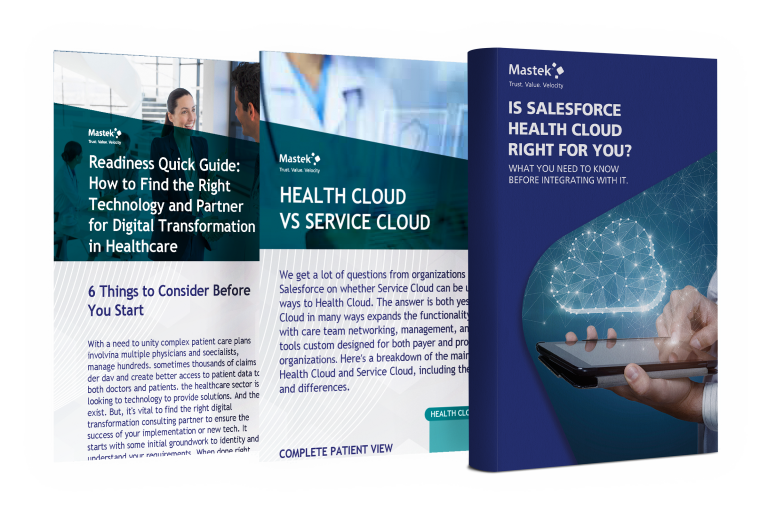Unless you work for an organization whose business is technology, it fairly likely that the notion of software platforms (vs. applications, solutions, projects, etc.) might be somewhat abstract. Having worked for a Fortune 500 technology shop, a Fortune 300 industrial, and now experiencing a variety of organizations in Healthcare as a consultant, I can say with certainty that the two perspectives are often quite a way apart. In so many non-tech organizations, software simply equals applications.
As business leaders, we tend think of software in terms of applications that do specific things and, on occasion, in terms of that oh-so-expensive word, integration. We go to a conference. We see a great demo, and we focus on all the great features and the business problems solved. Perfect.
Of course, we understand that it is not quite as simple as the vendor or consultant would have us believe. No, we are not naïve. We know we don’t have a green field and that functionality will have to be mapped to processes. Old must be replaced with new. Change management will need to play a big part. We know that customization will be required, and we know we don’t exist on an island, and accordingly, that we’ll need data in and data out. Integration must happen, and it will not be an easy task. For all those reasons, we also know that when we hire our system integrator the bill will be high and the timeline long.
But, do we fully understand why these things are true each time we try to bring in a new application or build out a custom solution in our ecosystem?
Digital Transformation: The Apps Are the Easy Part
Digital Transformation is all the rage in Healthcare today. Patient Experience and Patient Engagement are two key areas where so many Healthcare Delivery Organizations are focusing their IT investments. CRM, Patient Self-Service, Connected Patient Apps, and other new technologies are on seemingly every provider organization’s to-do list. The number of healthcare organizations that have started taking on digital transformations in recent years is growing at an increasing pace. However, like most industries, the results have definitely been mixed with common themes running through the list of challenges.
According to an IDG Research study, over half of digital transformation efforts are stalled or abandoned. In that same survey, 64% of respondents identified Legacy Systems and Infrastructure as the top barrier to progress. In the Healthcare world, that primarily points to EHR and Revenue Cycle Management. Driven in part by regulation and government incentive, the last decade has seen mass adoption of EHR platforms by providers across the country – and with much success. Much like the giant ERP and Order-to-Cash platforms found in other types of businesses, these EHR systems hold the key data at the core of the enterprise. They are the systems on which operations occur and transactions get recorded. Accordingly, they tend to be large scale (sometimes monolithic), difficult to change/upgrade, and not usually built with open integration in mind.
As a result, while there are myriad options for buying or building new digital capabilities on the front end of the digital transformation, making any of them work inevitably requires access to these crown jewel systems. Stewards of these systems are rightly focused on stability. After all, they are critical to the day-to-day operations of the business, and any disruption is unacceptable. Integrating new systems at the pace desired to for innovation is unlikely to be supported – nor is it really responsible to the enterprise.
So, if this is the case, how can an organization ever reach the point where innovation becomes fast and new digital-age applications can be integrated efficiently into the ecosystem?
Where is the Platform?
The answer, surprisingly, has been around for quite a few years. By isolating source applications with an abstraction layer and accessing them through services with well-defined interface contracts, we can effectively isolate the complexity of legacy systems and avoid solving the same integration problem over and over again each time we bring a new application on-line. This architectural pattern is often referred to as SOA or Service Oriented Architecture, and its potential benefits have been well understood for some time as highlighted in this 2008 HIMSS report.
Does this mean we need to run out and implement SOA? Of course, not. What we are suggesting, however, is that we need to revisit our software ecosystem and ensure that we take a “platform” approach and make foundational investments to enable the outcomes that individual applications may provide. Whether we build a full-blown SOA platform or just cobble together a well-designed set of services via an iPaaS (Integration Platform as a Service) vendor such as Mulesoft, the key is to have our foundational investments enable simple, vendor-neutral access to the capabilities of applications in our ecosystems – especially EHR, Rev Cycle Management, and other typically “legacy” systems.
So, how come we aren’t all further along? As intelligent business people, we understand the value that foundational investments bring. We get that investments in tooling make a factory production more efficient. We get that documentation makes processes durable. We definitely grasp the basic notion that when set out to construct a building, a platform (literally a foundation) in necessary order to make all the other elements stable and strong. So why is that with modern software solutions – especially in an Enterprise context – do we so often overlook the notion of a platform?
A Mothership Is Not a Platform, Nor Does Integration Equal a Platform
But wait. We DO already have a platform. Those legacy systems are themselves platforms, no? We run our business on Oracle E-Business Suite or SAP or some other behemoth of an ERP. We’re a Cerner or an Epic shop. Our EHR is our platform. After all, the vast majority of our staff uses one more of the various modules, and it is a foundational piece to our operations. All true – but none of this suggests the existence of an agility enabling platform in our IT ecosystem.
Well, it’s not just the ERP or the EHR, we say. We have also purchased middleware technology (maybe even an iPaaS solution), and many of our applications are integrated together. We have ETL process. We use web services. Did you hear me? Web. Services. We definitely have a platform… Don’t we?
Nope. Not quite. Middleware technology is definitely an enabler (and certainly a platform by strict definition) that might even be considered a prerequisite to a functioning platform for our purposes, but it is not quite sufficient on its own.
OK, So What Do You Mean by Platform?
So, for our purposes, a Platform is a foundational set of software services that enable rapid integration of new technology into the ecosystem and provide several key characteristics:
- Simplicity – By organizing services in functional, business process-related manner and executing any cross-application complexity within the service layer, a platform allows custom application developers and new third-party apps to “blindly” request the information and services they need without having deep knowledge of the ecosystem.
- Loose Coupling – By removing vendor-specific concepts in the interface (i.e. talking to EHR vs. talking to Cerner) and executing any mapping/translation in a service layer (rather than in any application), platforms help avoid vendor lock and enable rapid change in an integrated world.
- Common Protocol / Methodology – The platform dictates the available protocols (REST vs. SOAP) and methods (file vs. table/view-based batches), service granularity, and service availability (which applications/users are allowed and how much). This greatly lowers the cost of operating the platform and creates economies for developers and integrators as well.
- Accessibility – By organizing services in logical manner and centralizing access to all services to a single location, the platform makes the various data and services for the whole ecosystem more accessible to developers and integrators.
So, all in all, what we need is a system that can adapt to newer, faster technology, capable of building out custom solutions within the same ecosystem as per the business needs.
Is Salesforce Health Cloud right for you?
Download our free Success Kit to determine if Health Cloud is the right resource for your organization.









